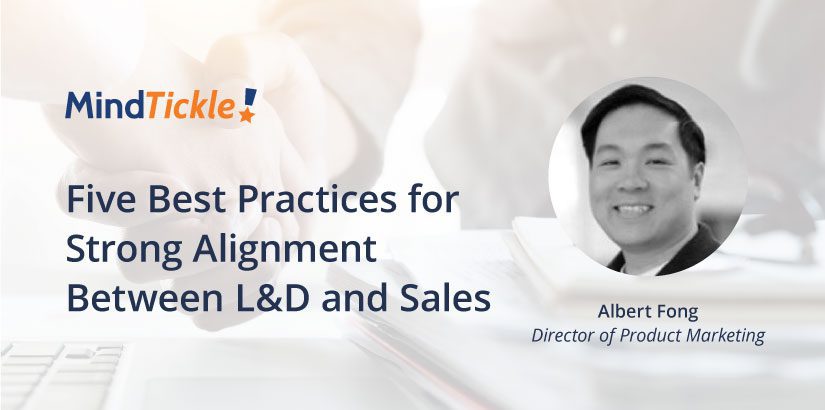Learning — especially for sales reps and other customer-facing employees — is ideally intended to be ongoing to reinforce knowledge over time but to also reflect evolving business strategies, regular updates on products and services, and changes in regulatory requirements. After all, if the market landscape is dynamic, how can learning be a one-time endeavor?
Considered a core piece of any sales enablement program, teams from Learning and Development (L&D) departments often step in to drive sales training and ongoing learning, initially aligning with HR for onboarding new sales talent. All too quickly, however, it can become disconnected from sales reps and other customer-facing employees. New sales reps, for example, often see working with L&D as a one-time, check-the-box activity, knowing that the faster they get through training, the faster they can begin to tackle their quotas. Perhaps their next brush with training/L&D comes annually with sales training sessions at SKOs or perhaps during a time specific to onboarding. Outside of these opportunities, ongoing learning and more importantly, sales skills development, falls on the list of priorities.
This disconnect between the needs of sales and those tasked with training sales benefits neither customer-facing employees nor L&D itself. It can start with a lack of clarity about the sales mentality or process, communications break down leading to more missed opportunities by sales training to learn how to improve the way they operate and deliver value. And the misalignment can snowball for a number of reasons — sales enablement isn’t delivered in the flow of work, there is no feedback mechanism or there are no agreed-upon and measurable results. And this misalignment with sales usually spans across sales onboarding, sales training, and sales coaching. And for sales, the reps begin to neglect or miss opportunities to leverage best practices, resources, and development methodologies that have been proven to work.
Fortunately, a number of best practices can be undertaken to avoid such a disconnect and misalignment. Here, we put forth five ways L&D can continue to engage with customer-facing teams to help them be more effective:
Align outcomes. Define the business outcomes desired — such as better customer experiences, increased renewal revenues, the addition of net new logos, etc. — and align them with learning outcomes. In doing so, learning becomes a critical enabler of reaching the desired business outcomes, and L&D teams are more incentivized to stay engaged with the vehicles (sales reps) for reaching those outcomes.
Create a skills framework. A framework communicates clear expectations for a sales rep’s competencies and capabilities. Ideally, the framework comprises the soft skills (such as active listening and concise speaking) and hard skills (such as prospecting, lead qualification and negotiating) that combined, make an effective sales rep. The framework should map back to the outcomes listed in best practice No. 1.
Identify the engagement opportunities for customer-facing teams to enhance their knowledge, skills and behaviors. This includes leveraging gamification to challenge sellers and other teams to earn certifications and badges and implement rewards for participation and completion. Sellers should also be engaged in simulated and real-world scenarios through virtual role-plays to teach and reinforce desired behaviors. Another opportunity to engage teams is by distributing and sharing soft skills training and product knowledge at timed intervals while leveraging quizzes, open-ended questions, and materials in different formats to customer-facing teams.
Leverage a sales readiness platform. Mindtickle’s Sales Readiness platform combines training, content, analytics, certifications and coaching to ensure that all customer-facing employees have the tools to be successful and field-ready. With a sales readiness platform, L&D can meet mandates for everything from on-boarding to up-skilling to ongoing learning.
Build a culture of coaching. Coaching is valuable in its ability to improve performance and help the best reps perform even better through ongoing feedback that fine tunes hard and soft skills. L&D can support coaching by empowering managers to systematically assess reps’ capabilities and provide consistent, ongoing feedback and insights when and where their “coachees” need it. It’s important also to provide a coaching session cadence, easily facilitated through a sales readiness platform like Mindtickle.
In its primary role of managing the development of employees — and to do so in a way that supports other key business priorities — L&D emerges as a critical piece of the overall success of a business. As such, a close and consistent alignment with sales is crucial. By following these five best practices, L&D and sales can remain a critical part of sales enablement and readiness with the ultimate goal of building value across an organization.



 By Poornima Mohandas
By Poornima Mohandas
 By Rahul Mathew
By Rahul Mathew
 By Helen Waite
By Helen Waite